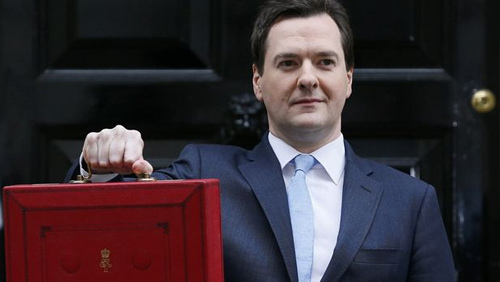Uniform business rates are to be scrapped in a move announced by chancellor George Osborne in his Spending Review. So what does this mean for the small businesses based in towns up and down the UK? Is it more power to them or, as several dissenting voices claim, a “race to the bottom”?
The thrust behind Osborne’s plans is to put money and power into the hands of local government authorities (LGAs) and employer-led community groups.
In this way the revenues collected by the LGAs can be put towards infrastructure and town regeneration that will make trading conditions favourable and also attract talent to the area.
Currently these projects are largely funded through local government grants that are paid as blanket amounts to each town or borough. Osborne claims that the amount raised through retaining 100% of business rates will be much higher so everybody wins. But does this all stack up?
There are those who unreservedly support the move and are glad to see the back of uniform business rates.
Laundrapp CEO Ed Relf believes that “power has been handed back to the local community” following the announcement.
“If the UK is to take further strides towards dominating the ‘sharing economy’ in the Europe, entrepreneurs and start-ups must be supported and nurtured by local government,” he continued.
>See also: Small business apprenticeships hammered to make way for u-turn
“Innovation must not be confined to London; it is a country-wide necessity.”
Relf believes the new rules will lead to “local pockets of innovation” and “facilitate the nationwide expansion of both sharing and on-demand services”.
In North Wales The Comtek Group CEO and founder Askar Sheibani is also positive about the move. And he even calls upon the government to go further in the coming months.
“There is still some way to go as business rates – which to date have been unfairly calculated by property value rather than business profitability – are still in need of a complete review to truly bring rates on par with the rest of Europe,” he said.
“Let’s hope that in the time it takes the government to properly review the business rates system, the new Enterprise Zones will stimulate business growth for local communities, such as with the Deeside Enterprise Zone in Wales.
“I am pleased to see that the Government is continuing with this initiative of injecting much needed cash into regions of the UK that aren’t so closely tied to cities.”
The arguments made by the small business owners themselves are certainly compelling.

Innovation, a resurgent high-street and devolved financial power are all concepts that are fashionable in the current climate – and it is easy to make the argument that local business rates provide all of these.
But not everyone is so sold on the idea. This concept has been mooted for some time and since it was first conceived it has been dogged by persistent claims that it will facilitate a “race to the bottom”.
The crux of the argument is that if LGAs have the ability to lower business rates, which in theory they will, all authorities will feel pressurised to do so to attract the most desirable businesses to their area.
But is this fear founded in reality? Centre for Cities senior economist Paul Swinney wrote in October that LGAs have in fact “been in a position to offer a business rate discount to businesses for some time, with the authority itself repaying any shortfall back to the Treasury”.
“To our knowledge Bradford is the only authority that has done this to date,” he said. “This would suggest that very few local authorities would be willing to use their newfound flexibilities to cut the business rate. And even if they did, it would do little to make them a more attractive place to do business from the perspective of a high-skilled company.”
So maybe the fears of a race to the bottom are not based on assumptions as strong as we might have thought. But there are still pressing concerns.
Both Labour and the Green Party oppose devolution of business rates amid fears it will “increase inequality” across the regions. The truth is the money that is centrally distributed to towns and regions does favour poorer areas. And some have come to rely on it in hard times.
And leaving towns and boroughs to their own devices does certainly appear to fuel inequality in some cases. For example, Westminster Council creates an annual revenue of £1.6bn from business rates. But Coventry in the West-Midlands only generates £118m and has a larger population.
Dr Matthew Ashton, senior lecturer in politics at Nottingham Trent University, told the Daily Mirror the proposal “really does run the risk of poorer areas being deprived of some of their revenue; that in this time of austerity is keeping their heads above water”.
“It could recreate this vicious cycle of rich areas getting richer and poor areas getting poorer. I would be very surprised if they didn’t have some safeguard in there,” he said.
And in the end how robust those safeguards are, which we will not know until at least the 2016 Budget, will determine how well protected the poorer areas are. If the safeguards fail it will be bad for those towns and ultimately very bad for the small businesses that trade there.
So overall what will the impact be? Yes, there will be extra cash available for some to spend on local infrastructure but there is a real risk that some deprived areas will lose out.
Frustratingly, we will not know the balance of pros and cons until at least 2016. But now we know that these changes are coming, businesses and trade bodies know what they need to do to negotiate the best deals. Ultimately it is how well they negotiate that will determine the success or failure of the policy.
Further reading: Business rates to be key focus for Osborne







